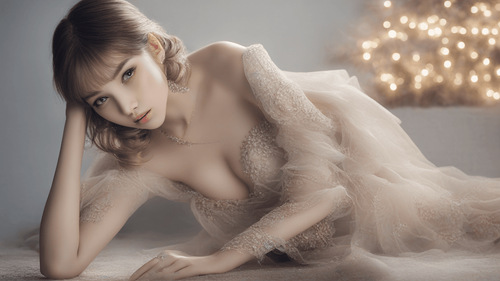
Introduction
In a world where technology continues to evolve at an astonishing pace, artificial intelligence (AI) has emerged as a groundbreaking tool that is transforming various industries. One of the most intriguing applications of AI is in the realm of image making. This article delves into the captivating world of AI image making, exploring its significance, benefits, and how it is reshaping the creative landscape.
AI Image Making: A Paradigm Shift in Creativity
AI Image Making, often referred to as AI-generated art, involves the use of sophisticated algorithms and machine learning techniques to create visually stunning and captivating images. This revolutionary approach combines human creativity with the computational power of AI to produce artworks that challenge conventional notions of artistry and expand the boundaries of imagination.
Benefits of AI Image Making
AI image making brings forth a plethora of benefits that are reshaping the creative process and industries at large. Some notable advantages include:
-
Enhanced Creativity and Exploration: AI-powered tools enable artists to explore new creative horizons, experiment with novel techniques, and push the limits of their artistic vision.
-
Time Efficiency: Traditional image creation can be time-consuming. AI image making accelerates the process, allowing artists to focus more on refining their concepts.
-
Diverse Styles and Inspirations: AI can mimic a wide range of artistic styles, from classical to modern, enabling artists to draw inspiration from various genres and eras.
-
Amplified Productivity: With AI assistance, artists can produce a higher volume of work, leading to increased exposure and potential revenue streams.
-
Collaboration and Integration: AI image making can be seamlessly integrated into collaborative projects, where artists and AI systems co-create unique pieces.
The Inner Workings of AI Image Making
At the heart of AI image making are complex algorithms that analyze and learn from vast datasets of existing artworks. These algorithms can generate new images based on learned patterns, colors, styles, and compositions. The process involves several stages:
Data Collection and Preprocessing
AI systems gather and preprocess massive datasets of images, allowing the algorithm to gain insights into various artistic styles, techniques, and themes.
Training and Learning
Through machine learning, the algorithm identifies patterns and relationships within the collected data. It learns to differentiate between different artistic elements and develops an understanding of composition, color theory, and stylistic nuances.
Generating New Images
Once trained, the AI algorithm can generate entirely new images by combining and reimagining elements it has learned from the training dataset. This process often involves a degree of randomness, leading to surprising and innovative results.
The Impact of AI Image Making on Creative Industries
AI image making is causing a paradigm shift in how creative industries operate and innovate. This transformation is particularly evident in:
Fine Art
Traditional artists are now embracing AI tools to infuse their works with a fresh perspective. AI-generated art pieces are finding their way into galleries and auctions, challenging the very definition of artistic originality.
Design and Advertising
Designers and advertisers leverage AI image making to swiftly generate captivating visuals for campaigns, thereby streamlining the creative process and enhancing the impact of marketing efforts.
Entertainment and Gaming
AI-generated imagery is becoming an integral part of the entertainment and gaming sectors, where it is used to create stunning visuals, immersive environments, and lifelike characters.
Fashion and Textile Design
Fashion designers are utilizing AI image making to experiment with innovative patterns, textures, and designs, leading to the creation of unique and avant-garde clothing lines.
FAQs about AI Image Making
How does AI generate art?
AI generates art by analyzing and learning from extensive datasets of existing artworks, then using complex algorithms to create new images based on learned patterns and styles.
Can AI replace human artists?
AI can enhance and complement human creativity, but it is not likely to replace human artists. The unique human touch and emotional depth in art remain invaluable.
Is AI image making ethical?
The ethical implications of AI image making, such as copyright and originality concerns, are subjects of ongoing debate. Clear guidelines and attribution systems are being developed to address these issues.
What role do artists play in AI image making?
Artists play a pivotal role in guiding and training AI algorithms. Their expertise helps shape the direction and style of AI-generated artworks.
Are AI-generated artworks valuable?
AI-generated artworks are gaining value and recognition in the art world. Collectors and enthusiasts are beginning to appreciate the novelty and uniqueness of AI-created pieces.
How is AI image making pushing artistic boundaries?
AI image making encourages artists to explore unconventional techniques, merge diverse styles, and challenge preconceived notions, leading to the creation of groundbreaking and innovative art.
Conclusion
AI image making has ushered in a new era of artistic exploration and expression. By harnessing the power of artificial intelligence, artists and creators are pushing the boundaries of creativity, redefining traditional norms, and shaping the future of visual arts. As AI continues to evolve, its synergy with human imagination promises to unlock even more astonishing possibilities in the world of image making.